The two-seater is an impressive 101 years old, 100 percent roadworthy and obviously is pristine condition. If you want to take it for a ride as a driver in the 21st century, you must scale back your comfort standards a little. Wilfried Senger pulls the choke while his son Ansgar operates the hand crank. The Opel 4/16 HP comes to life. “The accelerator pedal is in the middle. And when clutching, you always have to double-clutch,” explains Senger Sr.
Twelve rockets instead of four cylinders
Is there any driving pleasure there? “You bet!” But there was a time when this very vehicle was not powered by four cylinders, but rather by rockets. The Senger family from Rhinehessen is in possession of a particularly valuable relic: “This car was once the legendary RAK 1 rocket car,” says Wilfried Senger. How did the vehicle, long considered missing, come into his possession? The 86-year-old tells the exciting, eventful history of the Opel original.


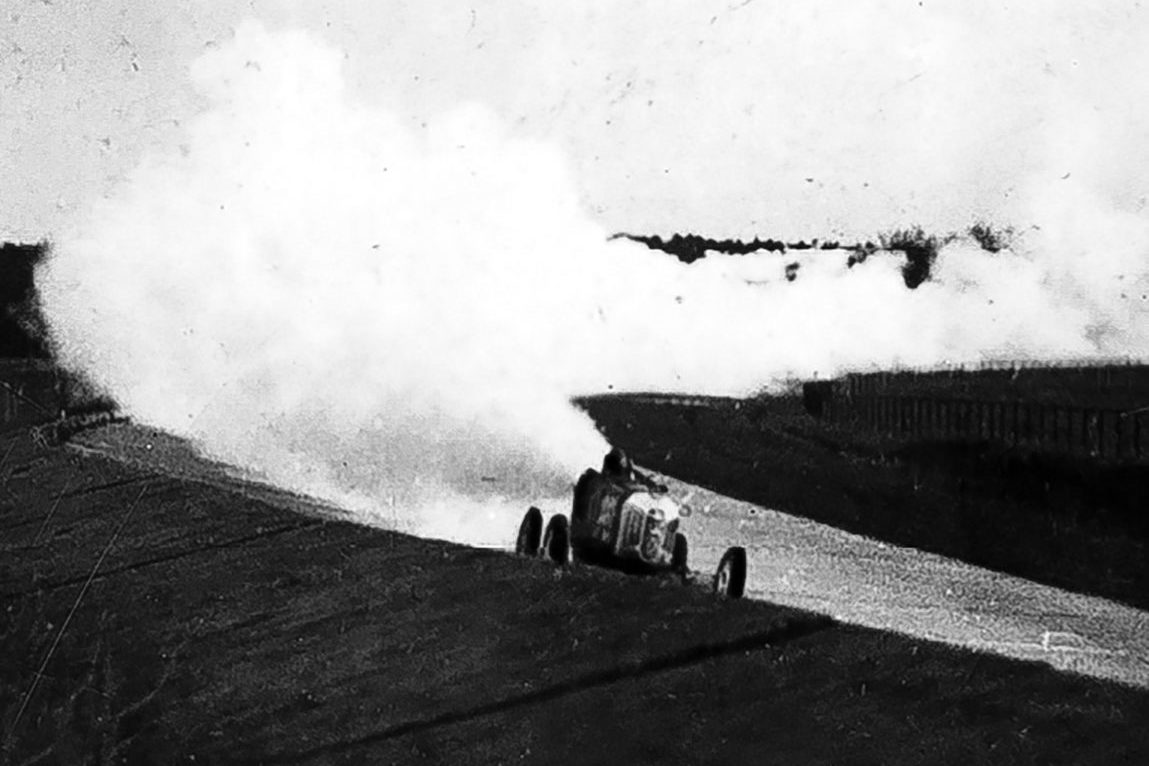
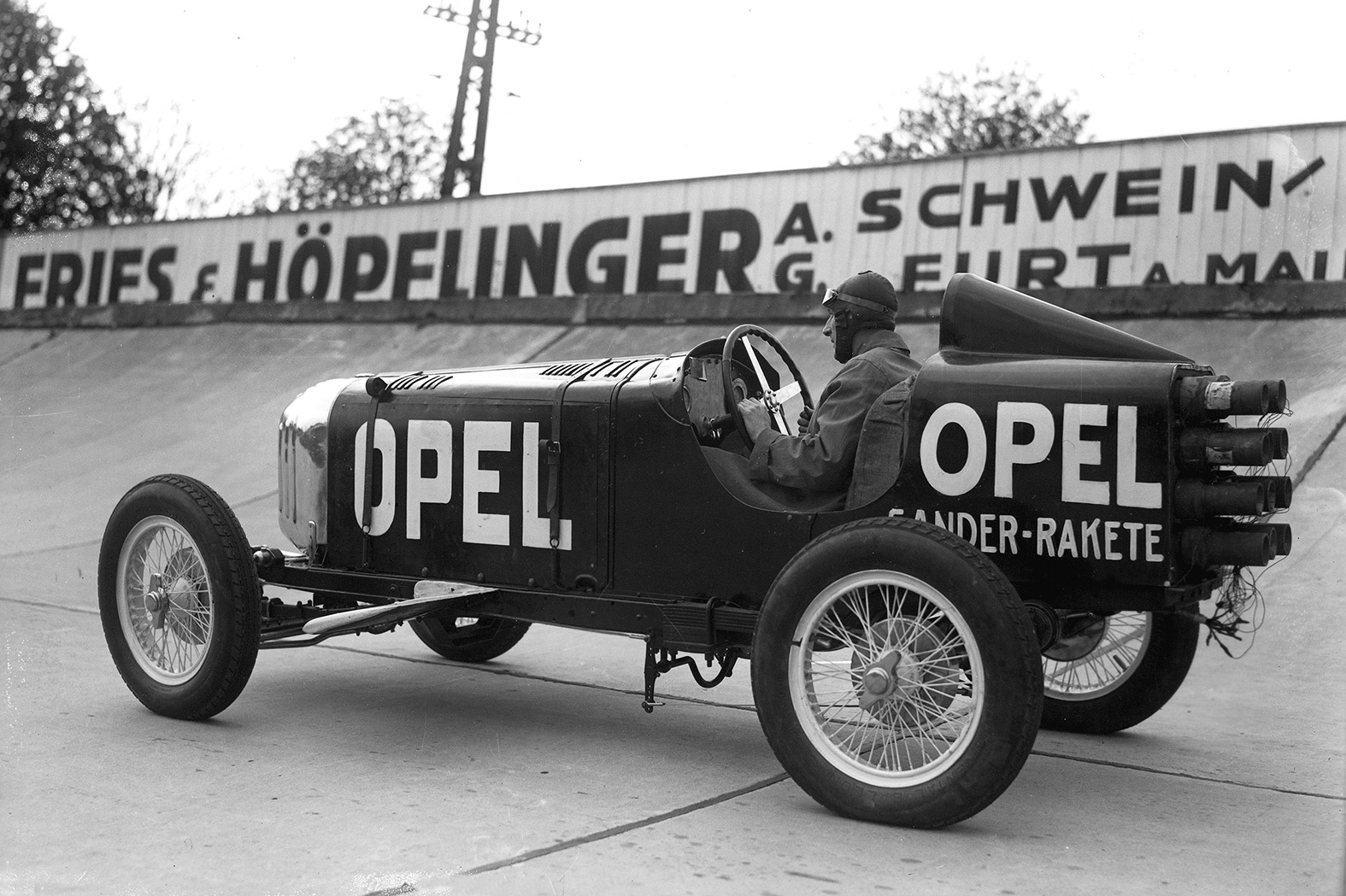

“…the car shot away, the track became a narrow line, the acceleration became the highest pleasure and exultant liberation.“
– Kurt Volkhart on the ride in the RAK 1 –
The story begins in the Opel testing department in 1923. The employees built a racing car based on the 4/16 hp pre-series of the Laubfrosch (tree frog), which achieved several victories by 1926. At the wheel: Fritz from Opel. When the company founder’s grandson meets the pilot Max Valier, with whom he shares his enthusiasm for rocket technology, they decide to build a rocket car. To quickly implement a “rocket engine,” they bring Friedrich Sander on board, whose company produces solid-fuel rockets for signalling purposes.
A racing car becomes the RAK 1
They convert Fritz von Opel’s racing car into the “T35 test car”, the engine comes out, instead twelve rockets decorate the rear, which are activated by a pedal in the footwell. The car, which was given the name RAK 1, demonstrated its potential on April 11, 1928 during a drive on the Opel test track in Rüsselsheim: Although only seven of the twelve installed rockets ignited, the car accelerated within eight seconds to 100 km/h with Kurt Volkhart at the wheel.



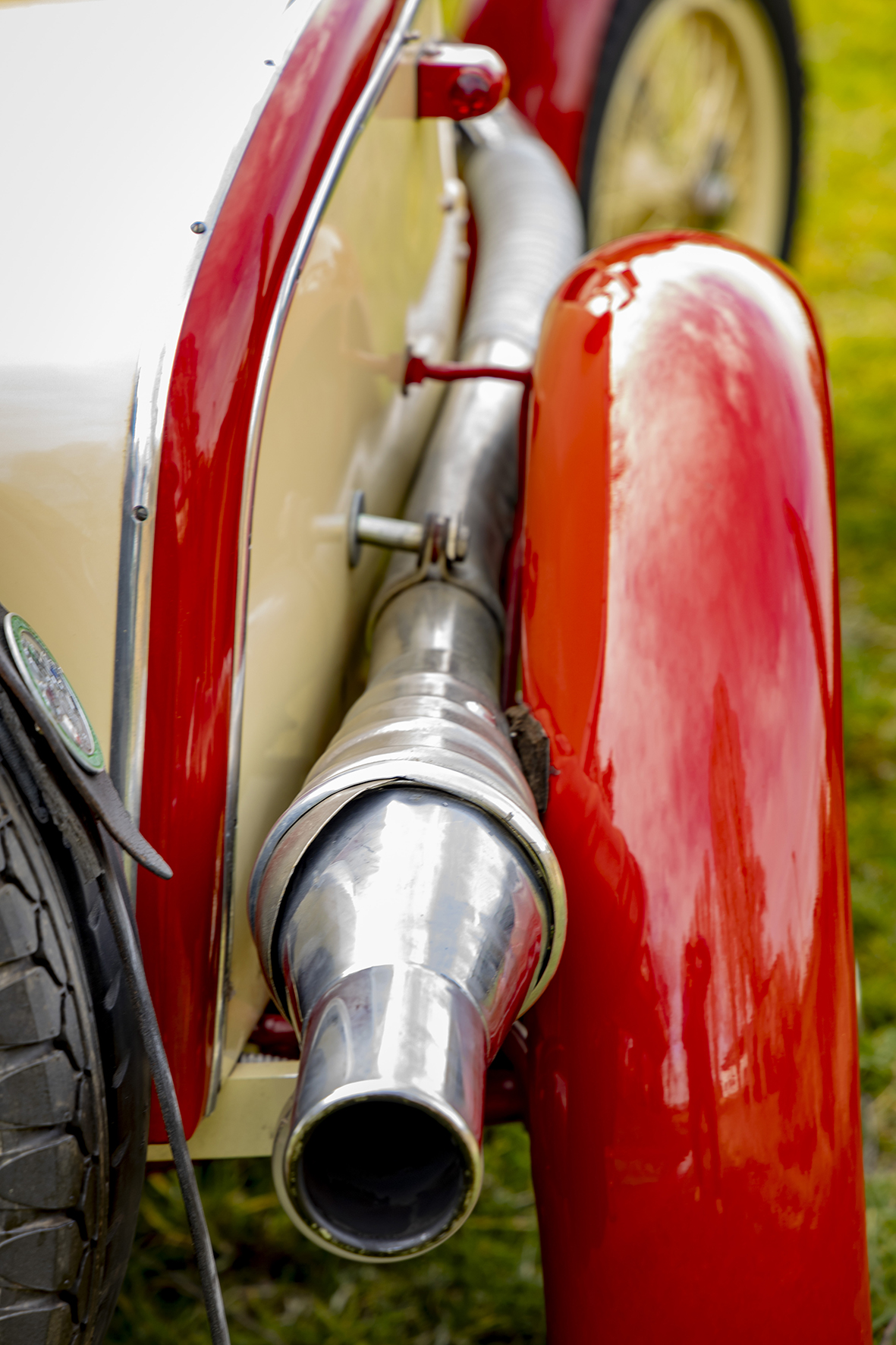
The successful attempt made it onto the front pages of many German daily newspapers. “The previous attempts have been far more successful than we, Max Valier and I, could have imagined,” says Fritz von Opel in a press release and announces another demonstration at the AVUS in Berlin in a newly built vehicle. On May 28, 1928, Fritz von Opel personally sat behind the wheel of the RAK 2 with 24 powder rockets in the back and set a celebrated new distance speed record of 238 km/h. The rocket age had arrived.
Sleeping Beauty in the garage
And the RAK 1? It has had its day and was dismantled. So out with the rockets and in with the four-cylinder engine. What’s left is a normal sports car. Irmgard von Opel, also a granddaughter of the company founder, drove it for two years, then in 1930 she sold it to Josef Becker, the uncle of Wilfried Senger’s wife Roswitha. The new owner only drove the car briefly and parked it in a shelter in 1933. The garage becomes overgrown, the first rocket car is forgotten as it disappears under leaves, twigs and bushes. Which is perhaps even fortunate for the sports car, as it remained undetected even during the looting in the post-war years.
It wasn’t until 1986, Josef Becker had already passed away, that his niece Roswitha and her husband Wilfried Senger came across the forgotten automobile. “It was completely rusted through, but still complete,” remembers Wilfried Senger, heir to the Senger car dealership, which was founded in 1933. And the trained car mechanic got to work.
Essential modifications
He takes the car apart and brings every single part back to life – the project lasts over 14 years. Mainly because he places the highest demands on his work. The Opel classic car should remain as close to the original as possible. He only allows himself modernisations “where they are essential”. For example, to get the engine cooling under control, which repeatedly causes problems. And an indicator is a must these days to be allowed on public roads.
“To be honest, the car’s eventful past wasn’t and isn’t that important to me – I love it the way it is now.”
– Wilfried Senger –

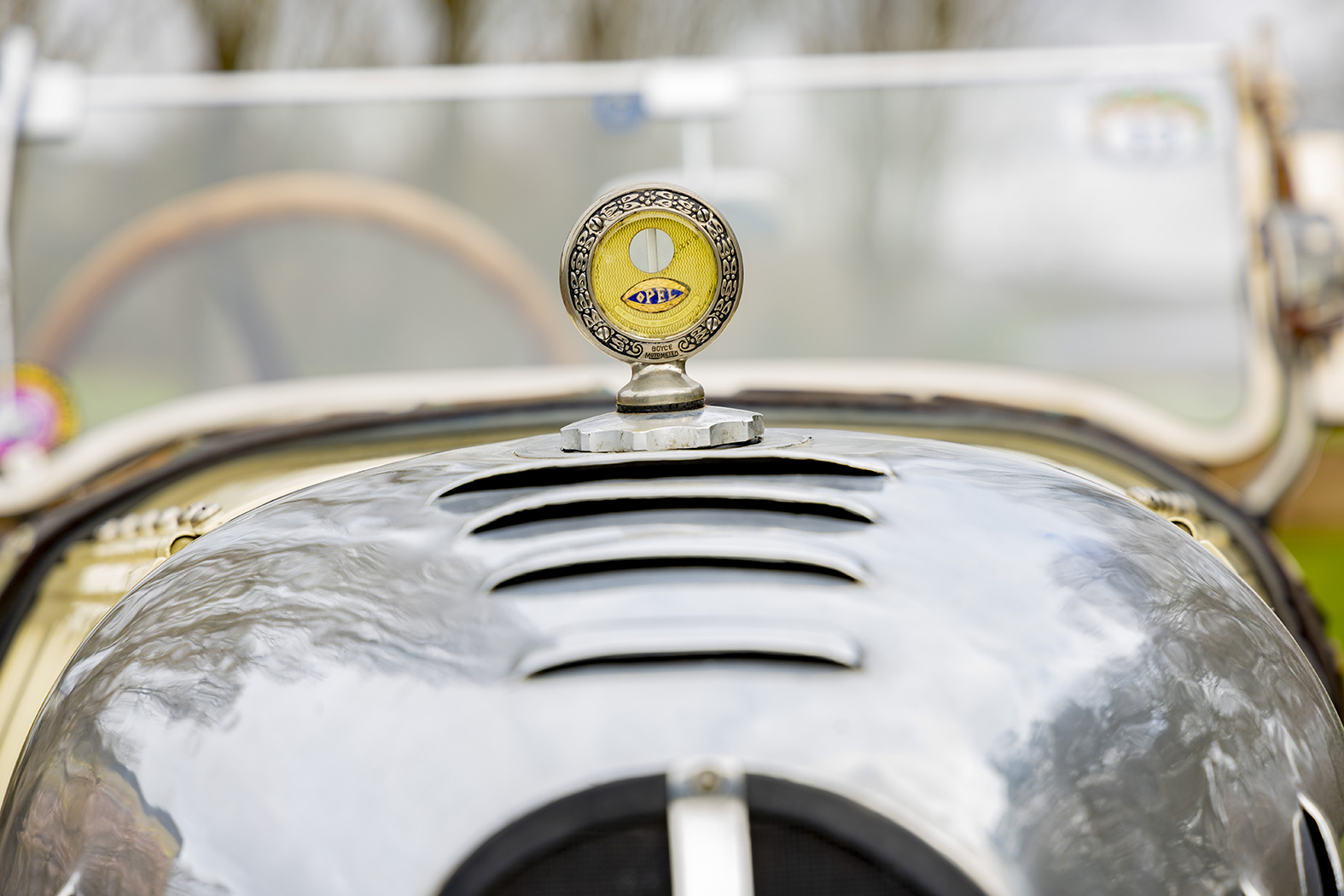
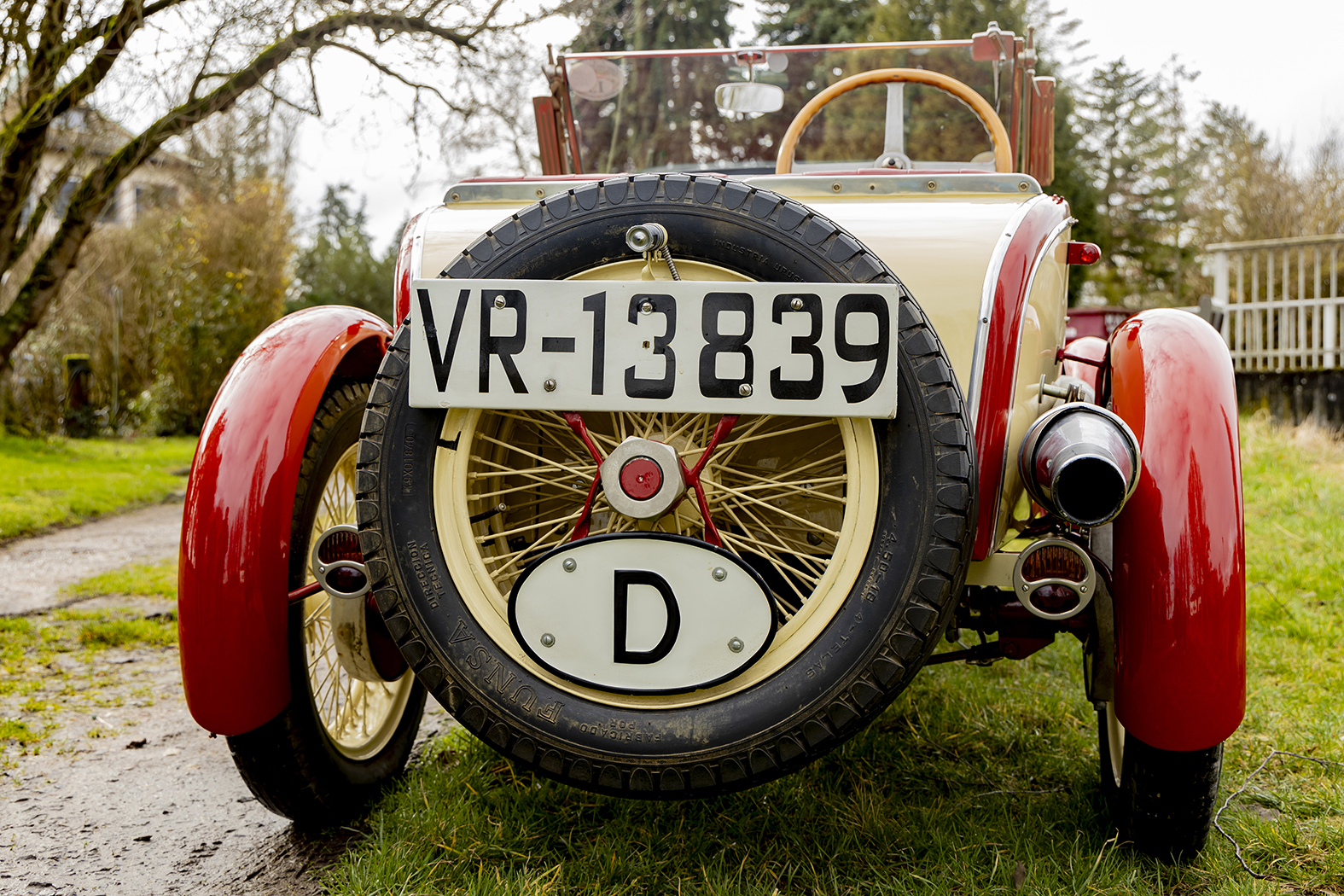

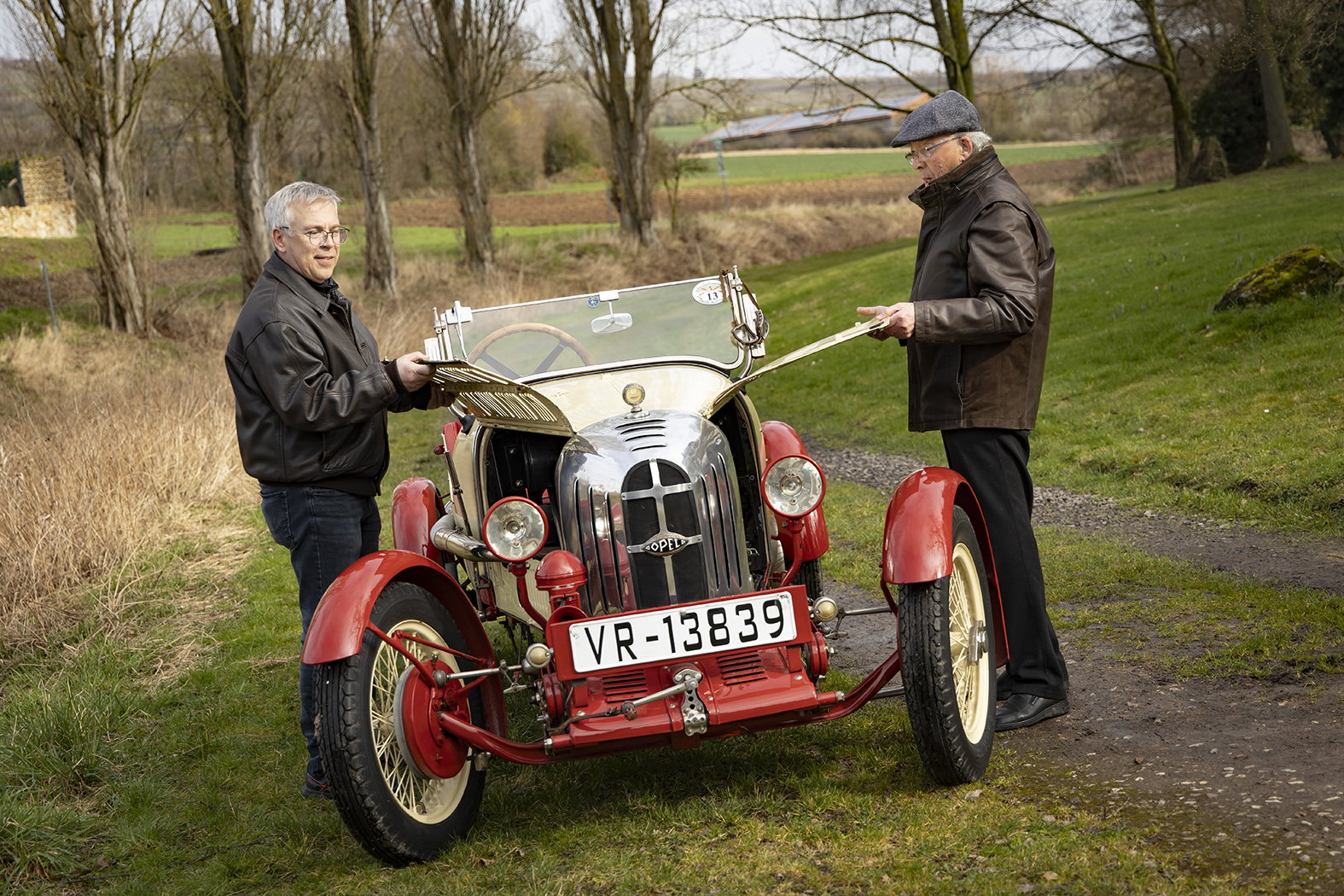
In 1999, Wilfried Senger presented his work to the public for the first time: in Rüsselsheim, as part of the supporting programme for the 100th anniversary of Opel automobile production. Although the car is recognised, admired and celebrated as a unique prototype from the Laubfrosch era, its glorious past as the RAK 1 is only revealed a few years later. It was Friedrich Rappsilber, vehicle appraiser and type representative for Alt-Opel-IG, who managed to establish the identity beyond doubt in 2006.
Appraiser reveals identity
Based on documents, statements from contemporary witnesses and certain details that are still visible on the vehicle today, such as the holes for the air baffles in the body frame, Rappsilber concludes in his report “that the motor vehicle to be assessed is the first vehicle used for tests with rocket propulsion – called RAK1 in the specialist press.”
Since the other rocket creations from Rüsselsheim – RAK 2, RAK motorcycle and RAK aircraft – only exist as replicas today, Wilfried Senger is in possession of the last original. “To be honest, the car’s eventful past wasn’t and isn’t that important to me – I love it the way it is now,” he says, taking a seat behind the wheel of his two-seater.
Guest appearance in the anniversary year
Like last year, Ansgar Senger will probably present the car at the Classic Gala in Schwetzingen, which is scheduled for August 30 to September 1, 2024. “After all, the focus this year is on the 125th anniversary of Opel automobile production,” says the 59-year-old junior happily. A worthy setting to present the last witness from Opel’s rocket days to the public.
April 2024
